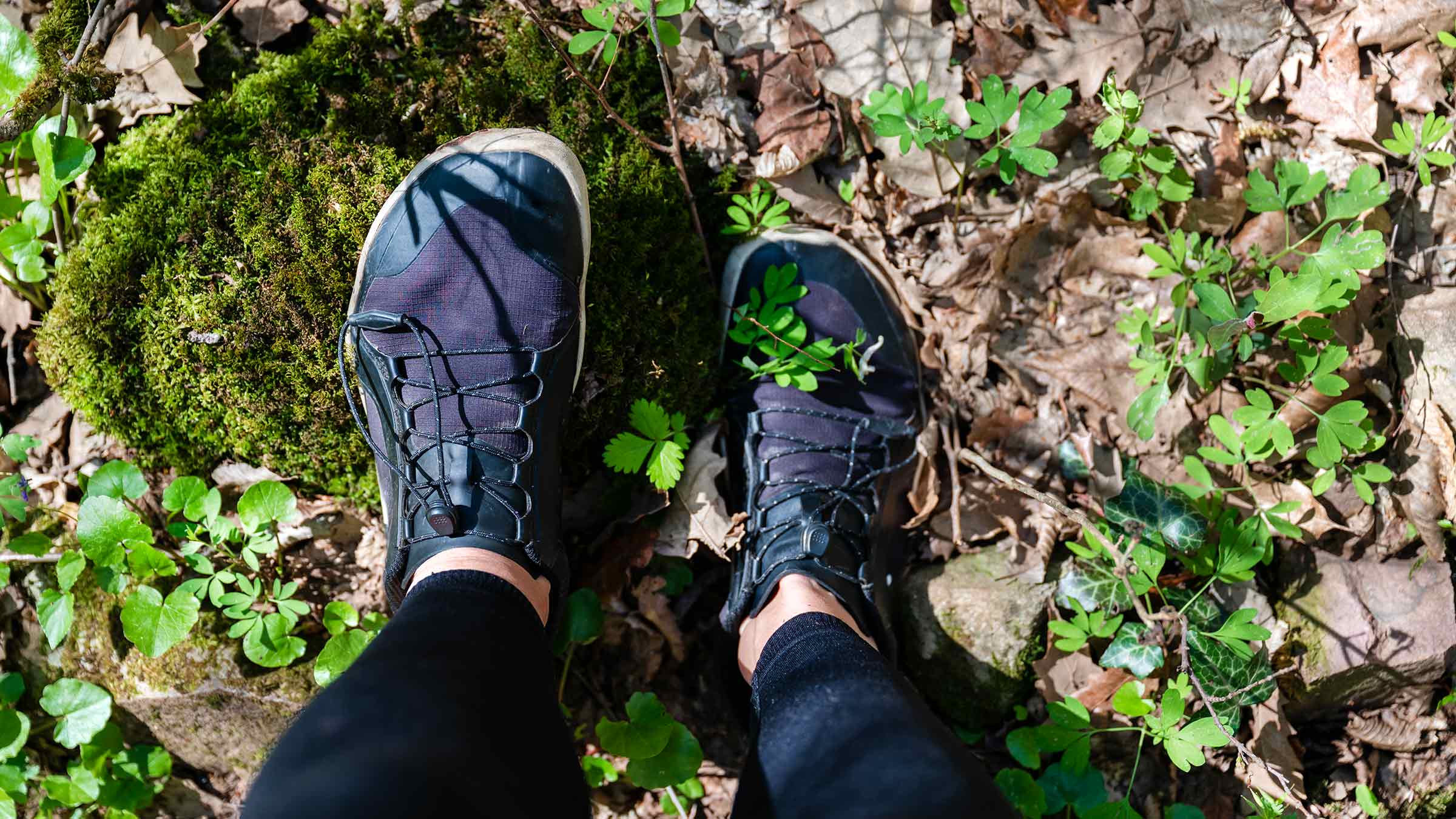
Our feet need to be comfortable.
Blisters, bunions, calluses — they can all happen if we’re sliding our feet into shoes that look far better than they feel.
Going without shoes might sound the most appealing. “Barefoot shoes” are made to mimic that experience. The soles of these minimalist shoes are thin, and there’s no arch support, which can make your feet feel more in touch with the ground.
Wide toe box shoes are another type of shoe that some people choose for comfort. They’re wider in the top portion where the toes are, offering more room for your toes to spread out.
Both barefoot and wide toe box shoes offer some benefits but they’re not for everyone.
Benefits of barefoot shoes
Long-distance runners may benefit from the lightweight nature of barefoot shoes.
Weightlifters, too, might find barefoot shoes appealing. While wearing them, they can spread their toes for a better grip on the floor as they’re lifting heavy weights or squatting.
Even if you don’t lift heavy weights or run a lot, barefoot shoes can help you build muscles in your arches and throughout your foot. When you have arch support in your shoes, you lose some arch strength because the muscles in your arches don’t have to work as hard.
Drawbacks of barefoot shoes
Barefoot shoes would not be a good choice if you have:
- high arches
- flat feet
- a foot condition such as plantar fasciitis or bunions
Tips for wearing barefoot shoes
If you choose to wear barefoot shoes, it’s important to slowly transition to them to build up your foot muscles. Walk before running in them. Switch them on and off with your regular shoes so you’re not wearing only barefoot shoes all the time.
The slow transition is crucial, because wearing barefoot shoes can cause some people to develop plantar fasciitis. That condition causes inflammation in the area of the foot that connects the heel bone to the toes and creates the arch, causing pain in both your arch and heel.
Arch-strengthening exercises and calf stretches can help prevent plantar fasciitis.
Runners going from a standard running shoe to a barefoot shoe can develop stress fractures in their feet. When barefoot shoes first became popular in this country, 15 to 20 years ago, a spike occurred in people getting stress fractures in their feet – some of them likely because people didn’t begin wearing barefoot shoes a little at a time.
Wide toe box shoes
Wide toe box shoes might be more comfortable for you than standard shoes, as long as they’re not too roomy that your feet slide around in the shoes. That can leave you with blisters.
Wide toe box shoes differ from wide shoes. In a wide toe box shoe, the only portion of the shoe that’s wide is where the toes are. Wide shoes are broader throughout the shoe.
Having a wide toe box can be especially helpful to someone with a bunion, a bony bump that develops on the joint at the base of the big toe.
Most people could benefit from wearing wide toe box shoes, but not everyone needs them.
What to consider when buying shoes
Regardless of the type of shoe you wear, you should have enough room to be able to spread out your toes.
If you’re going to be a running or walking a lot, you should go to a store that can measure your feet. Your foot size can change in adulthood. Sometimes women’s feet can grow by one half or one full size after giving birth because the ligaments in their feet stretch out, the same reason that seniors may need a larger shoe size.
One of the biggest mistakes people make with shoes is wearing a pair too long. Runners commonly change their running shoes every 300 to 600 miles.
If you’re not tracking your shoes by how many miles you’ve walked or run in them, think about how long you’ve worn them. If you’re wearing a shoe every day for most of the day, try to get a new pair at least every year.
After a year, the tread on the bottom may look OK, but the support has really worn down.
Even if you aren't a runner or a serious walker, shoes that fit well can help prevent injuries, making it much easier to walk or even just stand.

Concerned about your feet? Contact us today.
Ohio State's podiatry team provides comprehensive care backed by one of the nation's leading academic health centers.
Schedule Now




